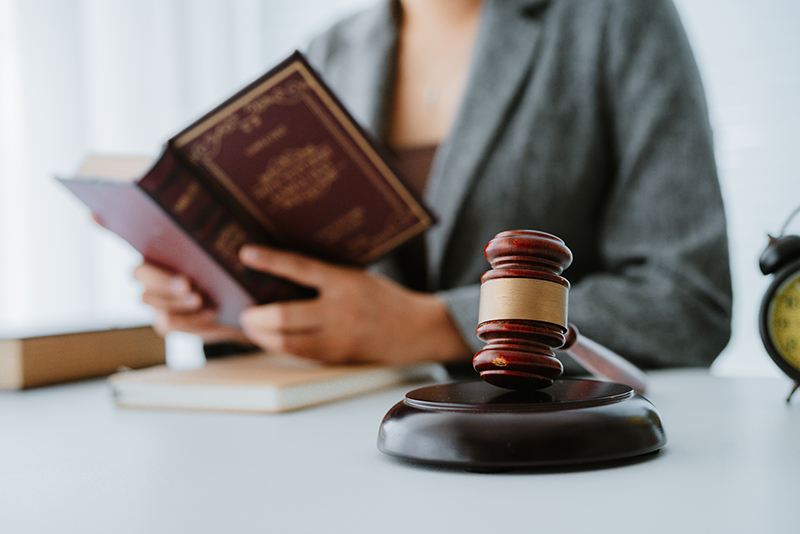Distracted driving feels like an everyday risk on Oregon’s roads and the numbers are truly shocking. From 2017 to 2021, distracted drivers in Oregon caused 26,264 crashes, leading to 194 deaths and 24,264 injuries. You might assume that hefty fines and strict phone laws are enough to keep you safe. The real surprise is that even a single moment of inattention can leave injured victims with complex legal obstacles and a race against the clock to protect their rights.
Understanding Oregon Distracted Driving Laws
Oregon takes distracted driving seriously, implementing comprehensive laws designed to protect roadway users from the dangerous consequences of driver inattention. The state recognizes that split-second distractions can result in devastating accidents, causing life-altering injuries and potential fatalities.

Legal Definition of Distracted Driving
Under Oregon law, distracted driving extends far beyond simple mobile phone use. The Oregon Department of Transportation defines distracted driving as any activity that diverts attention from operating a motor vehicle safely. This encompasses a wide range of behaviors including texting, talking on a handheld device, eating, adjusting navigation systems, and even intense conversations with passengers.
The legal framework in Oregon establishes clear penalties for drivers who engage in these dangerous behaviors. First-time offenders can face significant fines up to $1,000, with subsequent violations potentially resulting in higher financial penalties and more severe consequences. The Oregon Revised Statutes specifically outline these regulations, emphasizing the state’s commitment to roadway safety.
Implications for Accident Victims
For individuals injured in accidents involving distracted driving, understanding these laws becomes crucial for potential legal recourse. Proving that a driver was distracted at the time of an accident can significantly strengthen a personal injury claim. Evidence such as phone records, witness statements, and police reports can demonstrate negligence.
Drivers are prohibited from using handheld electronic devices while operating a vehicle. This means no texting, no browsing the internet, and no making calls without a hands-free system. The law applies even when stopped at traffic signals or in slow-moving traffic. Younger drivers face even stricter restrictions, with graduated licensing provisions that further limit device usage.
Injury victims should recognize that documenting potential distracted driving behaviors immediately after an accident can provide critical evidence for legal proceedings. Collecting witness contact information, taking photographs of the scene, and obtaining a comprehensive police report can substantiate claims of driver negligence.
The consequences of distracted driving extend beyond legal penalties. Victims may be entitled to compensation for medical expenses, lost wages, pain and suffering, and potential long-term rehabilitation costs. Understanding Oregon’s distracted driving laws empowers injured individuals to protect their rights and seek appropriate legal remedies.
Common Accident Scenarios and Legal Impacts
Distracted driving creates numerous hazardous scenarios on Oregon roadways, each presenting unique legal challenges and potential consequences for victims seeking compensation. Understanding these common accident scenarios helps injured individuals recognize the complexities of their potential legal claims.
Smartphone-Related Collision Patterns
Mobile device usage represents the most prevalent form of driver distraction in modern traffic incidents. The Centers for Disease Control and Prevention identifies that sending or reading a text message takes an average of five seconds, during which a vehicle traveling at 55 miles per hour can cover the length of a football field essentially blindfolded. In Oregon, these smartphone-related accidents frequently involve rear-end collisions, lane departure incidents, and intersection crashes.

The Oregon Department of Transportation reports that between 2017 and 2021, distracted driving contributed to 26,264 crashes, resulting in 194 fatalities and 24,264 injuries. These statistics underscore the significant risk posed by drivers who divert their attention from the roadway.
Multi-Source Distraction Scenarios
Beyond smartphone usage, Oregon courts recognize multiple distraction sources that can establish driver negligence. These include eating while driving, adjusting navigation systems, interacting with passengers, grooming, and managing in-vehicle entertainment systems. Our guide on common causes of personal injury accidents provides deeper insights into these complex scenarios.
A landmark study published in the Journal of Safety Research demonstrated that enhanced cellphone legislation in Oregon correlated with an 8.8% reduction in monthly rear-end crashes involving injuries. This research highlights how legal frameworks can directly impact roadway safety and provide critical protections for potential victims.
Legal Implications and Compensation Strategies
When distracted driving leads to accidents, victims must strategically document evidence to support their claims. Collecting comprehensive documentation becomes crucial in establishing negligence. This includes obtaining police reports, gathering witness statements, securing traffic camera footage, and potentially retrieving cellular phone records that might prove device usage during the incident.
Legal strategies often involve demonstrating that the distracted driver breached their duty of care by failing to maintain proper attention while operating a motor vehicle. Compensation may cover medical expenses, lost wages, property damage, pain and suffering, and potential long-term rehabilitation costs. The complexity of these claims necessitates professional legal guidance to navigate Oregon’s specific distracted driving statutes and insurance regulations.
Victims should act promptly, as Oregon’s statute of limitations for personal injury claims typically provides a two-year window from the date of the accident to file legal proceedings. Consulting with experienced personal injury attorneys who understand the nuanced landscape of distracted driving litigation can significantly enhance the likelihood of securing appropriate compensation for sustained injuries and damages.
How Oregon Laws Affect Injury and Wrongful Death Claims
Oregon’s legal framework surrounding distracted driving creates complex pathways for injury and wrongful death claims, presenting unique challenges and opportunities for victims seeking justice and compensation. The state’s specific statutes and legal principles significantly impact how these claims are processed and resolved.
Comparative Negligence and Claim Evaluation
Oregon employs a modified comparative negligence rule that critically influences distracted driving injury claims. According to legal experts, if a plaintiff is found to be more than 50% responsible for the accident, they are barred from recovering any damages. This nuanced approach means that even in distracted driving cases, the precise determination of fault becomes paramount.
For instance, if a victim was using their phone at the time of the collision, their potential compensation could be reduced proportionally. A driver texting while driving who is 60% at fault would be unable to recover any damages, while a driver 40% responsible could still seek partial compensation. This legal standard underscores the importance of comprehensive evidence gathering and strategic legal representation.
Damage Limitations and Compensation Frameworks
The Oregon Revised Statutes impose specific limitations on damage recovery, particularly in wrongful death claims. The state caps non-economic damages at $500,000 in such cases, which can significantly impact the total compensation available to grieving families. Our Oregon wrongful death lawyers understand these nuanced legal constraints and work diligently to maximize potential recoveries within these statutory limitations.
Compensation in distracted driving cases may include several critical components:
- Medical expenses (past and future)
- Lost wages and potential future earning capacity
- Property damage
- Pain and suffering
- Emotional distress
- Potential punitive damages in cases of extreme negligence
Statute of Limitations and Legal Procedural Considerations
Time is a critical factor in pursuing distracted driving claims in Oregon. The state enforces a two-year statute of limitations for personal injury claims and wrongful death cases. This means victims have a limited window to initiate legal proceedings, making prompt action essential. The Oregon Department of Transportation reports that from 2017 to 2021, distracted driving contributed to 26,264 crashes resulting in 194 fatalities and 24,264 injuries, highlighting the critical need for swift legal intervention.
Victims must also navigate complex evidentiary requirements. Proving distracted driving often involves obtaining cellular records, traffic camera footage, witness statements, and expert testimony. The burden of proof rests on demonstrating that the driver’s inattention directly caused the accident and subsequent injuries.
Understanding these intricate legal mechanisms requires specialized knowledge. Experienced personal injury attorneys can help victims navigate the complex landscape of Oregon’s distracted driving laws, ensuring that their rights are protected and they receive fair compensation for their suffering. The interplay between statutory limitations, comparative negligence rules, and specific distracted driving regulations demands a sophisticated legal approach tailored to each unique case.
To help clarify the major legal and claim distinctions discussed above, the table below summarizes Oregon’s approach to comparative negligence, damage caps, and statutes of limitations as described in the article:
| Legal Principle | Oregon Rule or Limitation | Key Impact for Victims |
|---|---|---|
| Comparative Negligence | No recovery if victim is >50% at fault | Victims >50% at fault cannot recover damages |
| Non-Economic Damages Cap (Wrongful Death) | $500,000 | Limits total for pain, suffering, emotional loss |
| Statute of Limitations (Injury/Wrongful Death) | 2 years from date of incident | Delays risk losing right to claim |

Steps to Protect Your Rights After an Accident
In the chaotic moments following a distracted driving accident, victims must take strategic actions to protect their legal rights and preserve critical evidence. Understanding the precise steps to take can significantly impact the potential success of future legal claims and compensation efforts.
Immediate Scene Documentation
The Oregon Driver Manual emphasizes the importance of proper collision documentation. Victims should prioritize collecting comprehensive evidence immediately after the incident. This includes taking photographs of vehicle damage, road conditions, traffic signals, and any visible injuries. Smartphone cameras provide an excellent tool for capturing detailed scene documentation.
Witness information becomes crucial in distracted driving cases. Obtain contact details from anyone who observed the accident, including names, phone numbers, and brief statements about what they witnessed. After a rear-end accident in Portland, these witness accounts can provide critical third-party perspectives that strengthen potential legal claims.
Medical Documentation and Treatment
Seeking immediate medical attention serves two critical purposes. First, it ensures proper healthcare and identification of potential injuries that might not be immediately apparent. Second, medical records create an official documentation trail that can substantiate injury claims. The Oregon Department of Transportation reports that distracted driving contributed to 26,264 crashes between 2017 and 2021, resulting in 24,264 injuries, underscoring the importance of comprehensive medical documentation.
Victims should:
- Request complete medical evaluations
- Keep all medical records and receipts
- Follow prescribed treatment plans
- Document ongoing medical challenges
- Obtain official medical reports detailing injuries
Legal Consultation and Evidence Preservation
Contacting an experienced car accident attorney becomes critical in protecting your legal rights. Attorneys can help preserve evidence, communicate with insurance companies, and develop a strategic approach to potential compensation claims. Professional legal guidance ensures victims understand their rights and avoid potential procedural mistakes.
Additional critical steps include:
- Reporting the accident to local law enforcement
- Obtaining an official police report
- Notifying your insurance company
- Avoiding direct communication with the other driver’s insurance representatives
- Preserving electronic evidence like cellular phone records

Time is of the essence in distracted driving claims. Oregon’s statute of limitations provides a limited window for filing personal injury claims, typically two years from the accident date. Prompt action helps secure vital evidence and maintains the legal integrity of potential compensation claims.
Navigating the aftermath of a distracted driving accident requires systematic, strategic approach. By meticulously documenting the incident, seeking proper medical care, and securing professional legal representation, victims can protect their rights and increase their chances of receiving fair compensation for their injuries and losses.
To streamline the many recommended actions after a distracted driving incident, the following table summarizes the essential steps victims should take, organized by category:
| Step Category | Specific Actions |
|---|---|
| Scene Documentation | Take photos of vehicles, road, injuries; collect witness names and contact info |
| Medical Documentation | Seek immediate evaluation; save records/receipts; follow treatment plan |
| Legal & Evidence | Call attorney; get police report; notify your insurer; preserve phone records |
Frequently Asked Questions
Take Control After a Distracted Driving Accident in Oregon
When your life changes in a split second because of a distracted driver, confusion and frustration can quickly take over. Oregon’s strict distracted driving laws are meant to protect you, but proving negligence and fighting for fair compensation can be overwhelming. You may be worried about lost wages, mounting medical bills, and gathering evidence before time runs out. This article shows just how much is at stake if you wait too long or do not have a team on your side that understands comparative negligence, evidence preservation, and the latest Oregon legal updates.
Let Goldberg & Loren guide you through every step. We have over 120 years of combined legal experience helping injury victims just like you. From documenting critical evidence to negotiating with insurance companies and maximizing your claim, we are committed to holding distracted drivers accountable. Take the next step right now. Visit Goldberg & Loren for a confidential case review or learn more about our approach to car accident claims. Do not let valuable time slip away. Get the trusted legal support you need to rebuild your future.
Recommended
- Texting and Driving in Portland, Oregon
- Oregon Reporting and Responsibilities After an Auto Accident
- After a Rear-end Accident in Portland
- Portland Car Accident Lawyer

